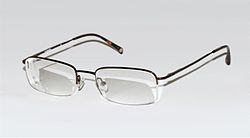ܚܙܝܬܐ
Hello, you have come here looking for the meaning of the word ܚܙܝܬܐ. In DICTIOUS you will not only get to know all the dictionary meanings for the word ܚܙܝܬܐ, but we will also tell you about its etymology, its characteristics and you will know how to say ܚܙܝܬܐ in singular and plural. Everything you need to know about the word ܚܙܝܬܐ you have here. The definition of the word ܚܙܝܬܐ will help you to be more precise and correct when speaking or writing your texts. Knowing the definition ofܚܙܝܬܐ, as well as those of other words, enriches your vocabulary and provides you with more and better linguistic resources.

ܚ̇ܙܝ̈ܬܐ
Assyrian Neo-Aramaic
Etymology 1
Instance noun of the verb ܚܵܙܹܐ (ḥāzē, “to see”).
Pronunciation
Noun
ܚܙܵܝܬܵܐ • (ḥzāytā) f (plural ܚ̈ܙܵܝܵܬ݂ܵܐ (ḥzāyāṯā))
Inflection
| isolated forms | with possessive pronouns | |||||||
|---|---|---|---|---|---|---|---|---|
| state | form | person | singular | plural | ||||
| m | f | |||||||
| singular | absolute | ܚܙܵܝܵܐ (ḥzāyā) | 1st person | ܚܙܵܝܬܝܼ (ḥzāytī) | ܚܙܵܝܬܲܢ (ḥzāytan) | |||
| construct | ܚܙܵܝܲܬ݂ (ḥzāyaṯ) | 2nd person | ܚܙܵܝܬܘܼܟ݂ (ḥzāytōḵ) | ܚܙܵܝܬܵܟ݂ܝ (ḥzāytāḵ) | ܚܙܵܝܬܲܘܟ݂ܘܿܢ (ḥzāytawḵōn) | |||
| emphatic | ܚܙܵܝܬܵܐ (ḥzāytā) | 3rd person | ܚܙܵܝܬܹܗ (ḥzāytēh) | ܚܙܵܝܬܵܗ̇ (ḥzāytāh) | ܚܙܵܝܬܗܘܿܢ (ḥzāythōn) | |||
| plural | absolute | ܚܙܵܝܵܢ̈ (ḥzāyān) | 1st person | ܚܙܵܝܵܬ݂ܝܼ̈ (ḥzāyāṯī) | ܚܙܵܝܵܬ݂ܲܢ̈ (ḥzāyāṯan) | |||
| construct | ܚܙܵܝܵܬ݂̈ (ḥzāyāṯ) | 2nd person | ܚܙܵܝܵܬ݂ܘܼ̈ܟ݂ (ḥzāyāṯōḵ) | ܚܙܵܝܵܬ݂ܵܟ݂ܝ̈ (ḥzāyāṯāḵ) | ܚܙܵܝܵܬ݂ܲܘ̈ܟ݂ܘܿܢ (ḥzāyāṯawḵōn) | |||
| emphatic | ܚ̈ܙܵܝܵܬ݂ܵܐ (ḥzāyāṯā) | 3rd person | ܚ̈ܙܵܝܵܬ݂ܹܗ (ḥzāyāṯēh) | ܚ̈ܙܵܝܵܬ݂ܵܗ̇ (ḥzāyāṯāh) | ܚܙܵܝܵܬ݂ܗ̈ܘܿܢ (ḥzāyāṯhōn) | |||
Etymology 2

Tool noun coined from the feminine characteristic adjective of ܚܵܙܹܐ (ḥāzē, “to see”); possibly a calque of Arabic نَظَّارَة (naẓẓāra).
Alternative forms
- ܡܲܚܙ̈ܝܵܬ݂ܵܐ (maḥzyāṯā)
Pronunciation
Noun
ܚܲܙܵܝ̈ܵܬ݂ܵܐ • (ḥazzāyāṯā) f pl (plural only)
- glasses, eyeglasses, spectacles (frames bearing two lenses worn in front of the eyes)
Inflection
| isolated forms | with possessive pronouns | |||||||
|---|---|---|---|---|---|---|---|---|
| state | form | person | singular | plural | ||||
| m | f | |||||||
| singular | absolute | ܚܲܙܵܝܵܐ (ḥazzāyā) | 1st person | ܚܲܙܵܝܬܝܼ (ḥazzāytī) | ܚܲܙܵܝܬܲܢ (ḥazzāytan) | |||
| construct | ܚܲܙܵܝܲܬ݂ (ḥazzāyaṯ) | 2nd person | ܚܲܙܵܝܬܘܼܟ݂ (ḥazzāytōḵ) | ܚܲܙܵܝܬܵܟ݂ܝ (ḥazzāytāḵ) | ܚܲܙܵܝܬܲܘܟ݂ܘܿܢ (ḥazzāytawḵōn) | |||
| emphatic | ܚܲܙܵܝܬܵܐ (ḥazzāytā) | 3rd person | ܚܲܙܵܝܬܹܗ (ḥazzāytēh) | ܚܲܙܵܝܬܵܗ̇ (ḥazzāytāh) | ܚܲܙܵܝܬܗܘܿܢ (ḥazzāythōn) | |||
| plural | absolute | ܚܲܙܵܝܵܢ̈ (ḥazzāyān) | 1st person | ܚܲܙܵܝܵܬ݂ܝܼ̈ (ḥazzāyāṯī) | ܚܲܙܵܝܵܬ݂ܲܢ̈ (ḥazzāyāṯan) | |||
| construct | ܚܲܙܵܝܵܬ݂̈ (ḥazzāyāṯ) | 2nd person | ܚܲܙܵܝܵܬ݂ܘܼ̈ܟ݂ (ḥazzāyāṯōḵ) | ܚܲܙܵܝܵܬ݂ܵܟ݂ܝ̈ (ḥazzāyāṯāḵ) | ܚܲܙܵܝܵܬ݂ܲܘ̈ܟ݂ܘܿܢ (ḥazzāyāṯawḵōn) | |||
| emphatic | ܚܲܙܵܝ̈ܵܬ݂ܵܐ (ḥazzāyāṯā) | 3rd person | ܚܲܙܵܝ̈ܵܬ݂ܹܗ (ḥazzāyāṯēh) | ܚܲܙܵܝ̈ܵܬ݂ܵܗ̇ (ḥazzāyāṯāh) | ܚܲܙܵܝܵܬ݂ܗ̈ܘܿܢ (ḥazzāyāṯhōn) | |||
Derived terms
- ܚܲܙܵܝܵܬ݂̈ ܫܸܡܫܵܐ (ḥazzāyāṯ šimšā, “sunglasses”)
Etymology 3
See the etymology of the corresponding lemma form.
Pronunciation
Verb
ܚܙܝܼܬ݂ܵܐ • (ḥzīṯā)